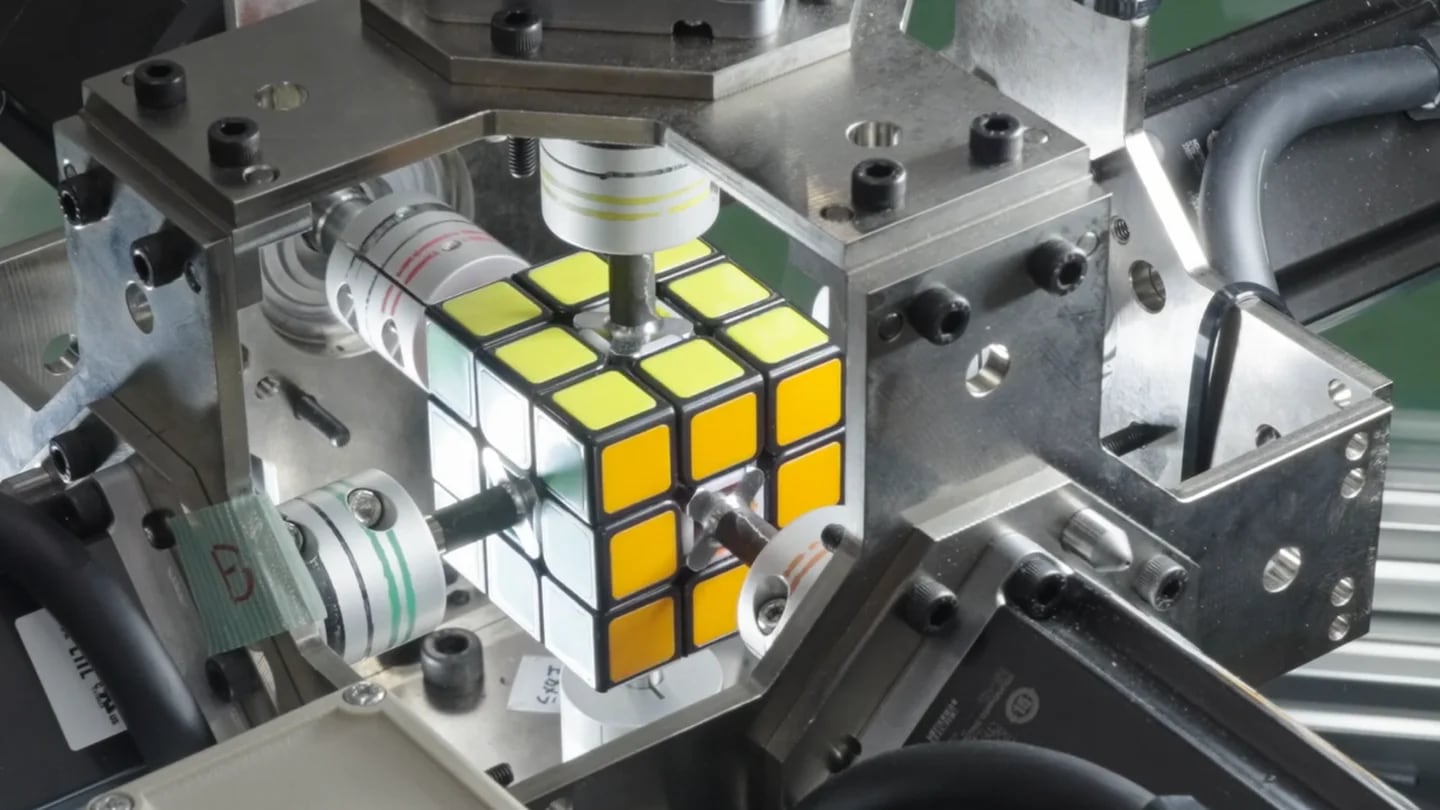A robot set a new Guinness World Records by assembling a Rubik’s Cube in the shortest possible time. The device surpassed what other models had done between 2016 and 2019, which tried to overcome the challenge in half a second, and reduced that figure to what a blink of an eye can last.
TOKUFASTbot was the robot that achieved this feat by solving the cube in just 0.305 seconds. A figure well below what a human has done, as the record is 3.13 seconds, and surpassing other similar devices that have set figures between 0.6 and 0.8 seconds.
How a robot assembled a Rubik’s cube in 0.3 seconds
The name of the robot responsible for this achievement is an abbreviation for TOKUI Fast Accurate Synchronized Motion Testing Robot, and it was developed by Mitsubishi Electric Corporatio. The device is the result of years of research and development in advanced automation and robotics technologies.

Equipped with an AI-based color recognition algorithm, this robot can quickly identify the positions of colors in a standard Rubik’s Cube, using this information to calculate and execute the movements needed to solve the cube in record time.
One of the features of the device is its ability to rotate each face of the cube in 0.009 seconds, allowing it to perform a full 90-degree rotation in a time almost imperceptible to the human eye.
This extreme level of speed demands precise and efficient mechanical design and perfect coordination between the robot’s electronic and mechanical components. The millimetric precision of its movements ensures that each turn is executed with the accuracy necessary to solve the cube in the shortest possible time.

However, reaching this record was no easy task for the engineers. Initially, the robot was so fast that it faced difficulties manipulating the standard Rubik’s Cube, causing jams and errors in the solving process. This challenge forced adjustments to the design and programming of the TOKUFASTbot, adapting its capabilities to work effectively with an object as small and complex as this toy cube.
Beyond the realm of entertainment and world records, the technology developed for this robot could have significant applications in industrial automation, where speed and precision are critical to improving efficiency and productivity in various manufacturing processes.
The evolution of robots assembling a Rubik’s cube
Advances in robots’ ability to solve the Rubik’s Cube have been remarkable in recent years. In 2009, the human record was at 1 minute and 4 seconds, but in just seven years, this time was reduced for the first time to less than a minute. Since then, progress has not stopped, and we already saw how a robot reached the record of 0.305 seconds.
To reach this figure, robotics experts have had a long way to go to gradually reduce the time range. For example, in 2016 the Sub1 Reloaded robot took 0.637 seconds to perform the necessary 21 movements and solve the Rubik’s Cube.
In 2018, German engineer Albert Beer created a robot that broke the official world record by solving the puzzle in 0.887 seconds. And in that same year, a device developed by Jared Di Carlo and MIT Biometrics Lab master’s student Ben Katz, was able to solve the cube in just 0.380 seconds.
In contrast, the current human record for solving a Rubik’s cube is 3.13 seconds. This shows that although robots are reaching extraordinary levels of speed and accuracy, human skills are still impressive in this iconic challenge.
To put it in perspective,even Erno Rubik himself, the inventor of the cube in 1974, needed a whole month to solve it for the first time. This shows that mastering this puzzle is no easy task, whether for humans or for machines as advanced as the TOKUFASTbot.



Comments